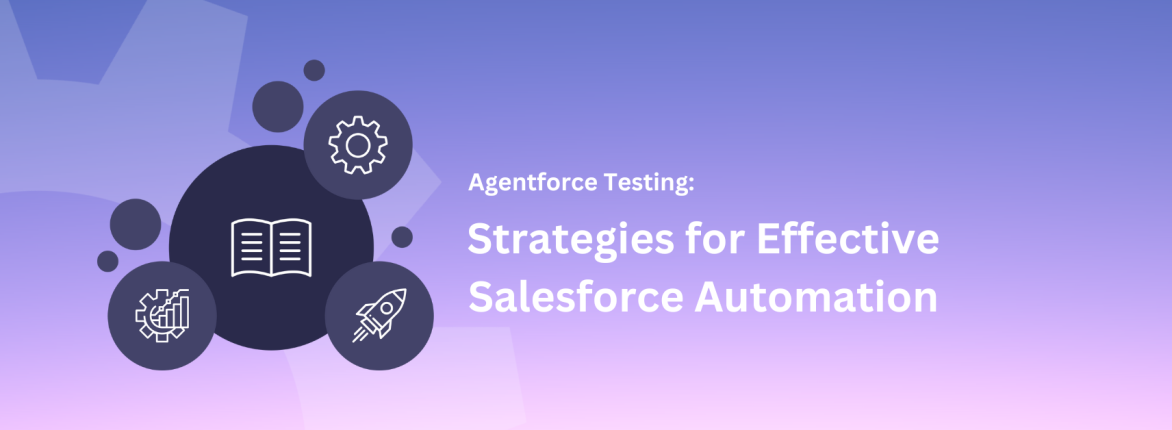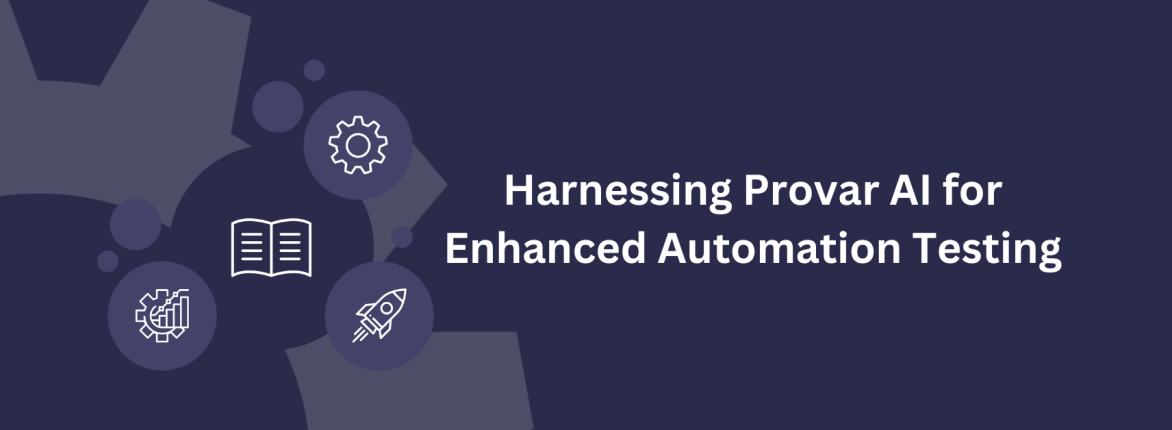This blog was written by Robin Gupta, Associate Vice President of Innovation at Provar, as part of our ongoing Executive Series.
Salesforce is the ultimate cloud-based Customer Relationship Management (CRM) platform that provides support to organizations in managing customer interactions and streamlining sales processes. Testing Salesforce differs from testing other software applications in several ways and requires a specialized testing strategy.
In this blog, we’ll outline how Salesforce testing differs from testing other software and the steps to design a test strategy to help your organization successfully implement Salesforce.
Salesforce-specific Features
Complex and Customizable Platform:
Salesforce is the ultimate solution for organizations looking for a highly versatile and customizable platform that can effortlessly address their unique requirements. Testing Salesforce requires a deep understanding of the platform’s architecture and functionality to ensure that the customizations do not negatively impact the system’s performance or functionality.
Continuous Updates and Releases:
Salesforce is an innovative software-as-a-service (SaaS) platform that keeps up with the latest trends and advancements in technology, consistently offering new features and releases to its users. Testing Salesforce requires organizations to keep up with these updates and releases, ensuring that their testing efforts are always up-to-date.
Multi-Tenant Environment:
Salesforce is a multi-tenant environment, meaning multiple organizations use the same infrastructure and resources. It can make it challenging to test changes or updates without impacting other organizations using the same environment.
Integration with Other Systems:
Salesforce is commonly integrated with other systems and applications. Testing these integrations requires a deep understanding of the different systems and their APIs to ensure they function correctly.
Importance of Data Quality:
Salesforce is a data-centric platform; data quality is critical to its functionality. Testing Salesforce requires organizations to ensure the data is accurate, consistent, and complete to ensure the system functions correctly.
Therefore, Salesforce testing differs from testing other software applications due to its complexity, continuous updates, multi-tenant environment, integrations with other systems, importance of data quality, and user experience. Testing Salesforce requires a bespoke strategy encompassing skills, expertise, and tools to ensure the system functions correctly, meets the business requirements, and provides a seamless user experience.
Steps to Design a Successful Salesforce Test Strategy
Here are a few steps to successfully design a test strategy for Salesforce testing.
Understand the business requirements:
The first step in designing a test strategy for Salesforce testing is understanding the business requirements. It involves collaborating with the business stakeholders and end-users to identify their needs, pain points, and goals. Business requirements guide the scope and critical areas of testing. Think of this step as stepping back and looking at the bigger picture from a user’s perspective.
Define the Test Objectives:
Once the business needs have been figured out, it’s important to be clear about the test goals. When creating test objectives, it is essential to ensure that they are specific, measurable, achievable, relevant, and time-bound. The test objectives must align with the business goals and objectives, thus playing a critical role in ensuring that the Salesforce application meets all the business requirements. With clear and concise test objectives in place, the engineering team can work with confidence, knowing that they have a reliable guide to follow. They are synchronous to the different stages of a product’s life cycle.
Define the Test Scope:
Based on the test objectives, define the test scope. It is imperative that the test scope encompasses all the critical areas of the Salesforce application that require testing. The test scope should also consider the different types of testing, such as functional, integration, performance, security, and regression. It is crucial for engineering teams to keep in mind that Salesforce performs routine updates and conducts tests on the platform regularly. For this reason, the testing should cater to the needs of the business to get the best results.
Define the Test Approach:
Define the test approach for Salesforce testing based on the test scope. The test approach should consider the testing methodology, testing techniques, test automation, test environment, and test data management. Different kinds of testing, like manual and automatic testing or a mix of the two, should be considered part of the testing plan. Tools like Provar Manager and Automation can be used to effectively implement the test approach defined in this step.
Define the Test Deliverables:
Based on the test approach, define the test deliverables produced during the testing effort. The test deliverables should include the test plan, test cases, test scripts, test data, test reports, and defect reports. Before the final phase of testing, the right people must review and accept the test deliverables. It ensures that the project goes smoothly and successfully.
Define the Test Resources:
Define the resources required for the testing effort based on the test approach. The test resources should include the testing team, test tools, test environment, and test data. To achieve efficient and effective testing, it is absolutely imperative to manage testing resources effectively.
Define the Test Schedule:
Based on the test resources, define the test schedule to outline the testing effort’s timelines and milestones. The schedule should consider the different types of testing and their dependencies. It should also consider the different phases of the testing effort, such as test planning, test execution, and test closure.
Conclusion
In conclusion, designing a test strategy for Salesforce testing is a critical activity that helps ensure that the application meets the business requirements, is of high quality, and provides a seamless user experience. By following the above steps, organizations can design a robust test strategy that aligns with the business goals and objectives and helps ensure the success of their Salesforce implementation.
Want to learn more about how Provar can strengthen your Salesforce testing strategy and empower your organization? Schedule a demo with our team to see how Provar can help you achieve your quality goals.










